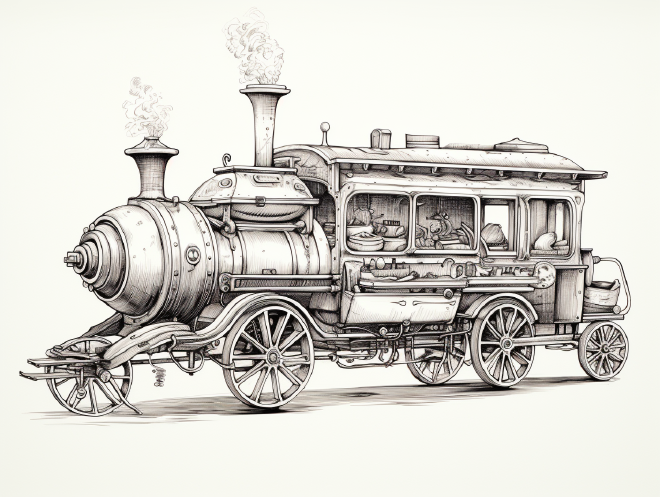Planes, Trains and the AI Research Cycle

Generative models like ChatGPT or Midjourney have received a lot of attention. They’re exciting, inspiring, and interesting. They’ve allowed many people to do things once thought unimaginable. But, I believe, they are both not yet fully realized products. AI-powered products of the future will look quite different than how we interact with these models.
To help understand how interactions will evolve, we need to understand how an idea progresses from research to product. Let’s start with research. Researchers—these are engineers, academics, scientists, technologists, and other thinkers—are people who conduct experiments. They form hypotheses, collect data, and crystalize their findings into research artifacts like papers, patents, publications, presentations, or policies. Then, they create prototypes that are tested, explored, and iterated upon. A product, on the other hand, is a tangible tool that enables users to accomplish their goals. Products enable users to do a job faster, easier, or in ways they couldn’t before. There are two driving forces for new research to connect to real user value: the pull and the push.
The pull is powered by need. Customers present challenges that require new knowledge and innovation. And in response to these challenges, researchers embark on new investigations and experiments, aiming to expand the boundaries of knowledge and create advancements that address those customer needs.
The push is fueled by curiosity. Researchers take the initiative to explore new ideas and technologies. They brainstorm and collaborate to identify areas that can benefit from innovation to push the boundaries of what is possible. Their goal is to discover new possibilities and propose solutions that may not have been considered before.
This collaborative effort between the pull side and the push side is essential for a healthy innovation system. It allows for the development of products that not only meet customer needs but also expand the boundaries of what is possible.
And this research and development cycle propels innovation. Each breakthrough inspires new discoveries and questions.
Take, for instance, the steam engine. In the 1500’s, a clever fellow came up with a steam-powered spinner to efficiently roast meat evenly by using a jet of steam blowing a wheel round and round. It was a perfect solution for that particular job.
Innovation didn’t stop there.
Others took this early steam invention and other innovations and remixed them to serve different purposes, solving new problems in different contexts. Like creating the first steam-engine. This is the power of innovation—finding new uses and pushing boundaries.
Right now, AI is still early in the research phase. It is experiencing both push and pull forces as many see what is now possible, and ask what might be possible in the near future. We are collectively experimenting with different approaches, exploring various ingredients, and determining what works and what doesn’t.
We’ve seen a cycle of intense research and development. And through a few AI winters, we’ve emerged with ever more capable models serving as components in ever more complex systems. These systems are now accessible to a wide range of users. They’ve been embraced by diverse groups with unique needs and goals. And those users are constantly providing feedback and data that informs future iterations.
Looking ahead, we can anticipate that AI will enable us to tackle bigger and more challenging problems. But what will the end products look like? In truth, we don’t know yet. One thing we know for certain is that innovations of the future are unlikely to look the same as they do today. As has been said before,, the best way to predict the future is to make it happen…
Just as the steam engine fueled further research and new inventions–such as railroad locomotives to cross great distances over land, steamships to cross oceans, and steam-powered factories–the products of AI will serve as the catalysts for even more breakthroughs and advancements.
The question then becomes: what will be our next breakthrough? We have our steam engine. What’s going to be our train?